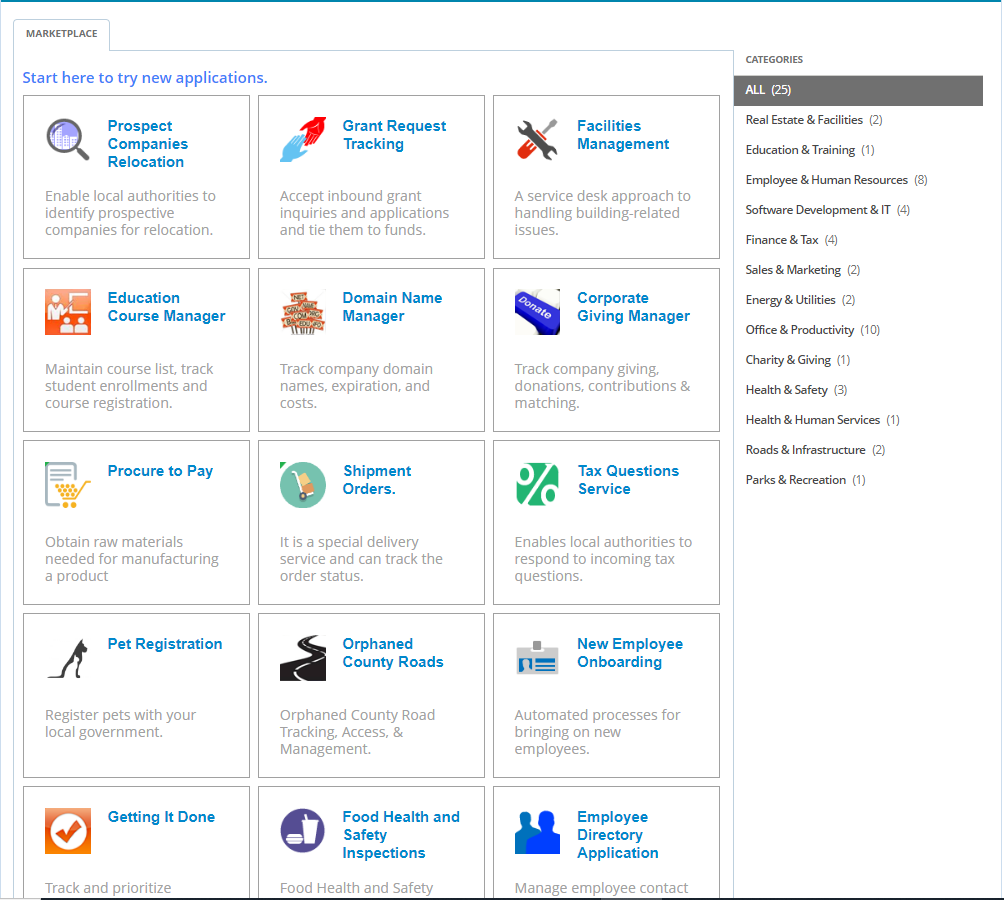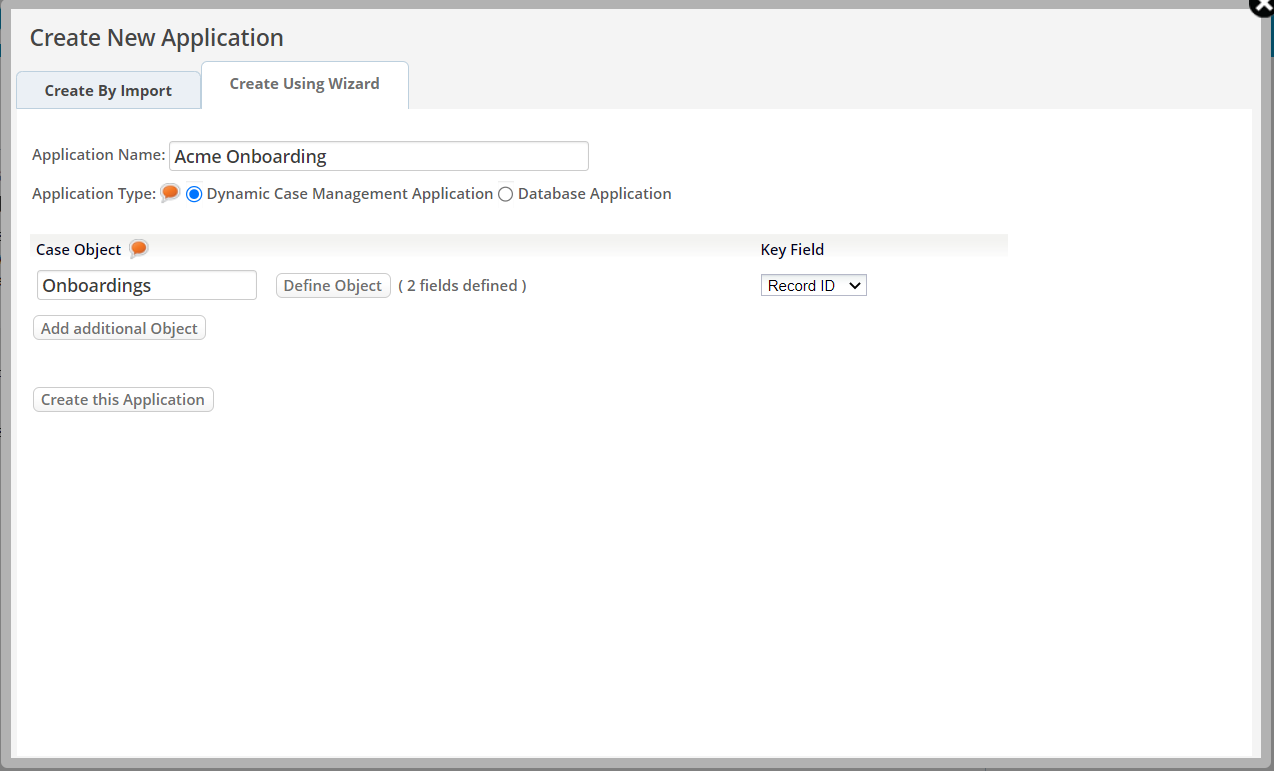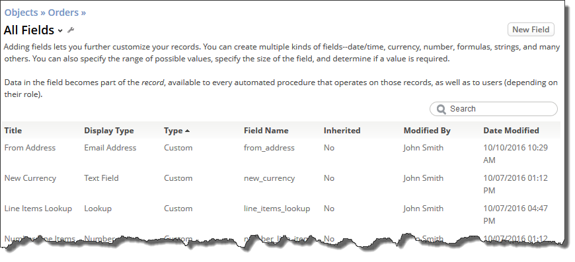Difference between revisions of "Exercise 02: Creating Applications and Defining Objects"
From AgileApps Support Wiki
Wikieditor (talk | contribs) |
Wikieditor (talk | contribs) |
||
| Line 89: | Line 89: | ||
:** Macro-actions, Validations, Processes | :** Macro-actions, Validations, Processes | ||
:** … | :** … | ||
<br><br>[[File: | <br><br>[[File:All_Fields.png|800px]]<br><br> | ||
:* When you define a new Object: | :* When you define a new Object: | ||
:** internal table and default Forms are automatically generated | :** internal table and default Forms are automatically generated | ||
Revision as of 14:19, 16 December 2022
Introduction
Types of AgileApps Applications
- Dynamic Case Management (DCM) Application
- Automates the handling of Cases, Incidents, or Investigations
- Allows for process variants for dynamic behavior
- Dynamic Case Management (DCM) Application
- Service Desk Application
- An example of a Dynamic Case Management system
- Specialized to provide additional features for customer support
- Service Desk Application
- Database (DB) Application
- A generic Web-based database application
- Like a spreadsheet but with extra capabilities
- Database (DB) Application
Dynamic Case Management (DCM) Application
The front-line of customer, partner, and employee engagement A case is a unit of work A case Object can have a different name (other than “case”) Examples:
- Service Requests
- Customer Service
- Claims Management
- Employee, Supplier, and Partner on-boarding & off-boarding
- Complex, high-value proposals
- Incident Management
- Order Exception Management
- Complaint Management
- Dispute Resolution
- Employee Health and Safety
- Investigations
- Customer Analysis
- Regulation, Audit requests, and tracking
- Compliance Tracking
- Fraud investigations
- Service Requests
Three Ways of Creating an Application
- Start with a sample application and customize it
- Create a new application:
- Import your Object and data from a spreadsheet
- Create a new application:
- Use the Wizard to start “from scratch”
Creating an Application from a Sample Application
- Select from many pre-built applications in the Marketplace
- Software AG owned source of pre-built applications
- Download for use with cloud tenants only
- Number of the available application may vary from time to time
- Select from many pre-built applications in the Marketplace
- Customize as required
Create a New Application by Importing Spreadsheet Data
- Object structure and Data only – no formulas
- Paste spreadsheet data
- OR: Load from File
Creating a New Application Using the Wizard
- Use to create a custom application from scratch
- You specify Object definitions by filling in the form
- Hint:
- Type a Field Label carefully (because it is used to create the field name)
- The label can change - the internal name never does
Components of an AgileApps Application
- An AgileApps application is composed of Objects and Object Relationships�
- An AgileApps application may also include:
- Forms, Web Forms, Pages, Views, Templates, Reports, Dashboards (display data)
- Validations, Business Rules
- Macros, Processes
- …
- An AgileApps application can integrate global and external system elements:
- Web Services, Global Picklists
- Java classes
- Web Tabs
- …
AgileApps is Built on a Relational Database
An AgileApps Object is an Enhanced Database Table
- An AgileApps Object consists of a database table, plus:
- Forms and Layout Rules
- Field and Form scripts
- Email & Document templates
- Macro-actions, Validations, Processes
- …
- An AgileApps Object consists of a database table, plus:
- When you define a new Object:
- internal table and default Forms are automatically generated
- Object is added as a new tab to you application by default
- When you define a new Object:
Forms to Display Object Fields
- As a developer/administrator at design-time:
- Modify (default) Forms in the graphic Form editor
- Create/clone new Forms
- Assign them to Application Roles
- Dynamically modify their behavior
- As a developer/administrator at design-time:
- As a User (Agent) at runtime:
- Use Forms to view/enter data for a record
- As a User (Agent) at runtime:
Defining Fields for an Object
- Mandatory label
- Displayed on the form
- Display Type (Field data type)
- Required or not
- Field Name (internal)
- Auto-filled
- Must begin with an alphabetic character
- Can contain alphabetical and numeric characters, and underscores
- Cannot be a reserved word (ex. BLOB, BINARY)
- Must be unique within the Object
[[File:]]
Exercise
In this exercise, you will generate three webMethods AgileApps Cloud applications in three different ways:






